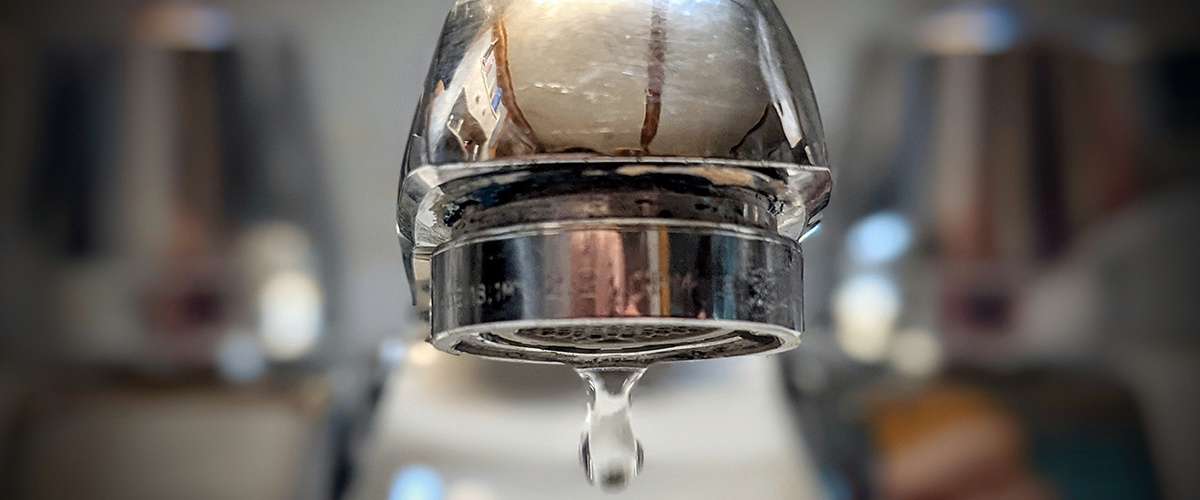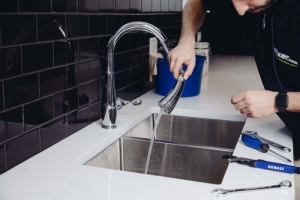Uncovering the Value of Repairing a Dripping Faucet
Uncovering the Value of Repairing a Dripping Faucet
Blog Article
On this page down the page you can locate additional wonderful facts pertaining to What Causes Leaky Faucets & How To Fix Them.

Trickling faucets may appear like a minor aggravation, but their influence exceeds just the aggravation of the sound. From wasting water to sustaining unneeded monetary costs and health and wellness threats, disregarding a dripping faucet can cause different repercussions. In this post, we'll look into why it's essential to resolve this common home issue promptly and properly.
Wastage of Water
Ecological Influence
Leaking taps contribute substantially to water wastage. According to the Environmental Protection Agency (EPA), a solitary tap dripping at one drip per second can squander more than 3,000 gallons of water per year. This not only strains water sources yet likewise impacts environments and wild animals depending on them.
Step-by-Step Guide to Taking Care Of a Dripping Tap
Devices Required
Before trying to deal with a leaking faucet, collect the needed devices, including a flexible wrench, screwdrivers, replacement parts (such as washers or cartridges), and plumber's tape.
Common Faucet Issues and Their Solutions
Recognize the sort of faucet and the specific concern creating the drip. Usual troubles include worn-out washing machines, corroded valve seats, or defective O-rings. Describe manufacturer guidelines or on the internet tutorials for detailed assistance on repairs.
Financial Expenses
Increased Water Costs
Past the environmental effect, dripping taps can blow up water expenses substantially. The accumulated wastefulness gradually equates right into greater energy costs, which could have been avoided with prompt repair work.
Potential Property Damages
Furthermore, prolonged trickling can cause damage to components and surfaces bordering the faucet. Water buildup can trigger discoloration, rust, and also structural issues if left ignored, resulting in extra repair prices.
Health Problems
Mold And Mildew and Mildew Growth
The consistent presence of dampness from a trickling faucet develops a suitable environment for mold and mildew and mildew development. These fungi not only endanger indoor air quality but likewise position health risks, especially for people with breathing conditions or allergic reactions.
Waterborne Diseases
Stagnant water in trickling taps can come to be a breeding ground for microorganisms and other microorganisms, enhancing the threat of waterborne conditions. Impurities such as Legionella microorganisms thrive in stagnant water, potentially resulting in serious diseases when consumed or inhaled.
Do it yourself vs. Professional Fixing
Pros and Cons of Do It Yourself Repair Work
While some might attempt to fix a dripping tap themselves, do it yourself repair services feature their very own set of difficulties. Without proper expertise and tools, DIY efforts can intensify the concern or bring about insufficient repair services, lengthening the problem.
Benefits of Employing a Professional Plumber
Employing a specialist plumber makes certain that the underlying source of the trickling tap is attended to efficiently. Plumbing professionals have the expertise and tools to detect and fix faucet concerns effectively, conserving time and decreasing the risk of more damage.
Ecological Obligation
Private Contribution to Preservation
Taking duty for fixing dripping taps aligns with wider efforts toward water conservation and environmental sustainability. Every individual's activities collectively make a substantial influence on protecting valuable resources.
Lasting Living Practices
By prioritizing punctual repairs and adopting water-saving habits, individuals add to sustainable living techniques that profit both existing and future generations.
Preventive Measures
Normal Upkeep Tips
To prevent trickling faucets, carry out routine upkeep such as cleaning up aerators, inspecting for leaks, and replacing worn-out parts promptly. Furthermore, think about setting up water-saving tools or upgrading to more effective fixtures.
Importance of Prompt Fixes
Attending to leaking taps as quickly as they're noticed protects against additional water wastefulness and potential damages, eventually saving both water and money over time.
Impact on Building Value
Perception of Well-Maintained Home
Maintaining a residential property in good condition, consisting of dealing with maintenance concerns like dripping faucets, enhances its perceived value and worth amongst potential purchasers or lessees.
Impact on Resale Value
Residences with well-kept plumbing components, consisting of taps, command greater resale values in the real estate market. Attending to leaking taps can add to a favorable impact throughout residential property inspections and negotiations.
Conclusion
Dealing with a leaking faucet exceeds mere benefit; it's a vital action towards saving water, lowering economic prices, and guarding wellness and property. Whether through do it yourself fixings or specialist support, taking action to repair leaking faucets is a small yet impactful way to promote liable stewardship of sources and add to a much healthier, much more sustainable future.
How to Fix a Leaky Faucet: Step-by-Step Repair Guide
A leaky faucet may seem like a simple annoyance, but if it's not fixed promptly, that leak could cost hundreds to potentially thousands. From water damage to mold, mildew, and high water bills, even a tiny leak can be catastrophic if left unattended. Damage like this can even affect the overall value of your home, so it's important to take the right approach for leaky faucet repair. You may need the help of a plumber in some cases, but we've got a few tips you can try on how to fix a leaky faucet before calling the pros.
Four Faucet Types
When you're learning how to fix a leaky faucet, the first step is knowing what kind of faucet you're working with! There are four common types.
Cartridge Faucets
Cartridge faucets come in one- or two-handled varieties. In one-handled cartridge faucets, hot and cold water combines in a single cartridge. In the two-handled versions, hot and cold water are controlled separately and mixed in the faucet.
Ball Faucets
Ball faucets have a single lever you push up and down to adjust the pressure and rotate to change the temperature. A slotted metal ball controls the amount of water allowed into the spout.
Compression Washer Faucets
They're the oldest type of faucet, but they're still used in many homes — especially older ones. Compression faucets have two separate handles that, when turned, raise or lower the washer that seals a water valve. This valve stops water from flowing through the faucet when it is turned off.
Disc Faucets
Disc faucets rarely need to be repaired due to their maintenance-free design. The water flow is controlled by two discs — the upper one raises and lowers against a fixed lower disc, creating a watertight seal. If your disc faucet starts leaking, you may need to replace the seals or clean residue buildup from the inlets.
Fixing a Leaky Faucet
Step 1: Turn Off the Water
Whether you're learning how to fix a leaky bathtub faucet or how to fix a leaky kitchen faucet, always turn off the water supply to your working area when you're fixing a leak. The last thing you want is a flood added to your list of things to fix.
Look for the shutoff valves below your sink or around the tub and turn them clockwise to stop the water flow. If your faucet doesn't have shutoff valves, you may need to turn off the water for the whole house. Check to make sure it's off by turning the faucet on. If nothing comes out, you're ready to start the repair.
Step 2: Take Apart the Faucet
How you disassemble your faucet depends on the type of fixture you have. You can use a flathead screwdriver to remove the caps on top of the handle or handles for cartridge and compression faucets. Inside, you should see handle screws. Unscrew these with a screwdriver to remove the handle.
Disc- and ball-style faucets will typically have an inlet screw near the handle, and removing that will reveal the interior of the faucet.
Detach the Valve Stem
For cartridge- and compression-style faucets, you'll see the inner valve stem or cartridge once you remove the faucet handles. If you have a compression faucet, unscrew the brass valve stem. If you have a cartridge faucet, pull out the cartridge. If your cartridge has been in place for a while, it may require some tools or extra force to remove it due to mineral deposits.
Examine and Replace Parts
Once you've removed the parts, check them out to confirm what needs to be replaced. You may see corroded rubber washers, O-rings, stems, or cartridges. On a ball-style faucet, check the seats and springs for damage.
If you need to repair a leaky disc faucet, check the inlet and seals on the lower disc.
Once you determine what parts must be replaced, visit your local hardware store. Bring the damaged parts with you to ensure you can purchase the correct components to replace them.
Clean Valves and Faucet Cavity
If you've removed a stem or cartridge, you may notice mineral buildup in the faucet's threads. Use white vinegar to clean the valve seat by soaking it for a few minutes, then scrub it away with a soft toothbrush and rinse with warm water. You can also clean the interior of the faucet in the same way.
Reassemble the Faucet
Once your faucet is cleaned and the required parts have been replaced, it's time to reassemble it. Put the pieces back together and slowly turn the water supply back on. Doing this slowly is crucial because too much initial water pressure can damage the new hardware you've just installed.
https://homewarranty.firstam.com/blog/how-to-fix-leaky-faucet

We had been made aware of that report on Why It's Important to Fix Leaky Faucets from an acquaintance on a different blog. Sharing is caring. Who knows, you may just be helping someone out. Bless you for being here. Come back soon.
Report this page